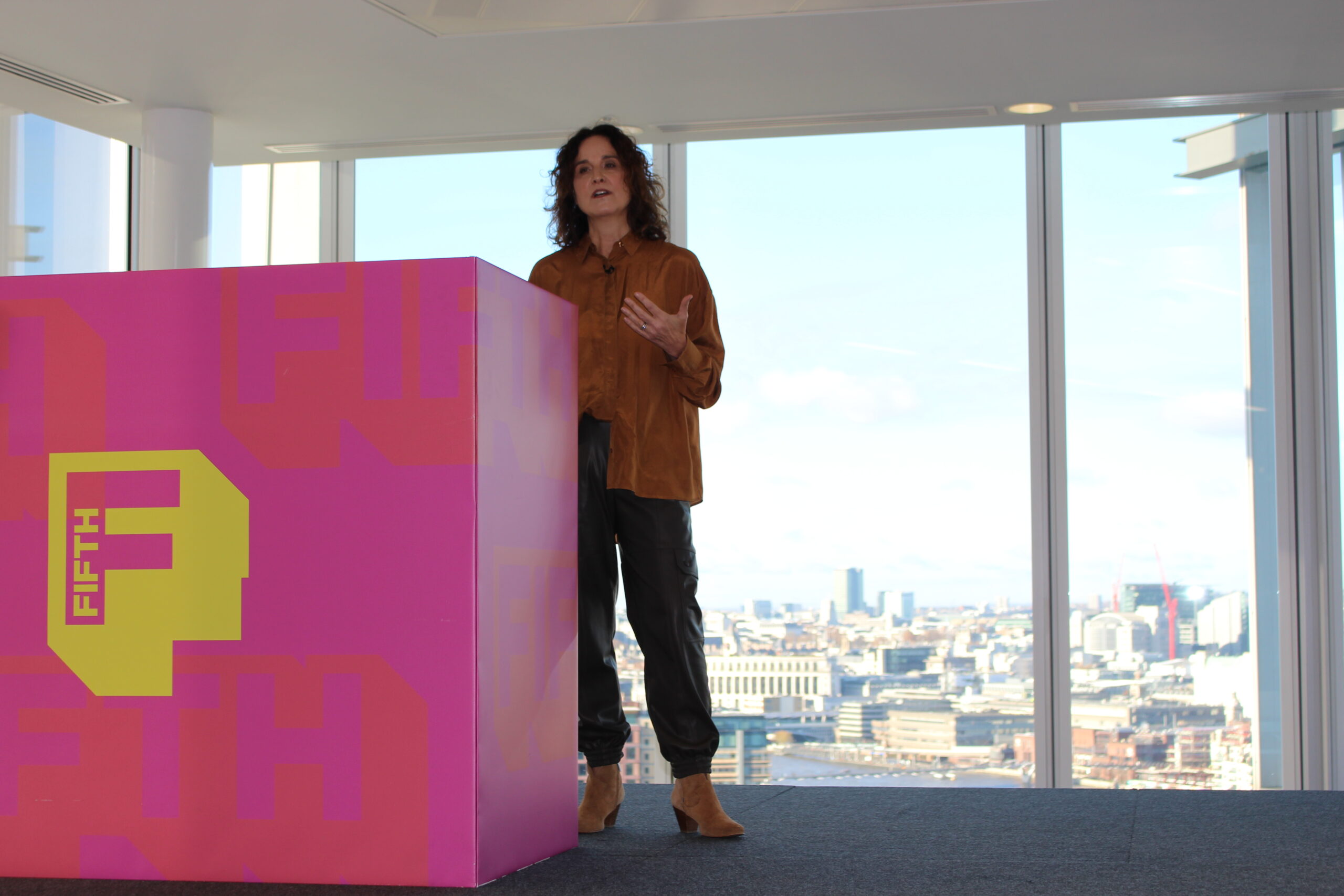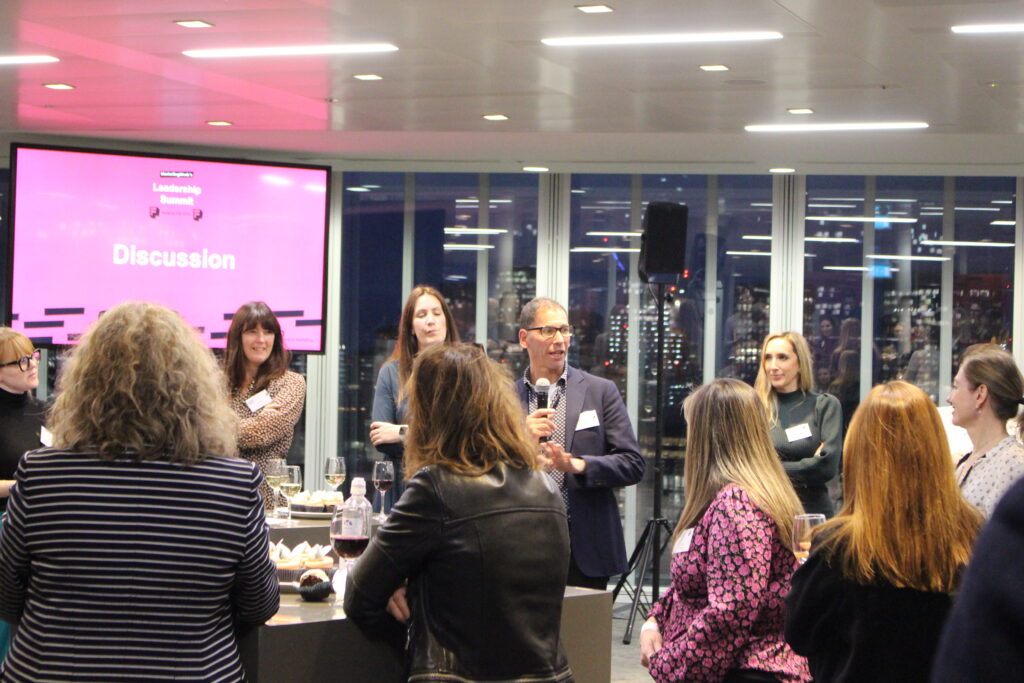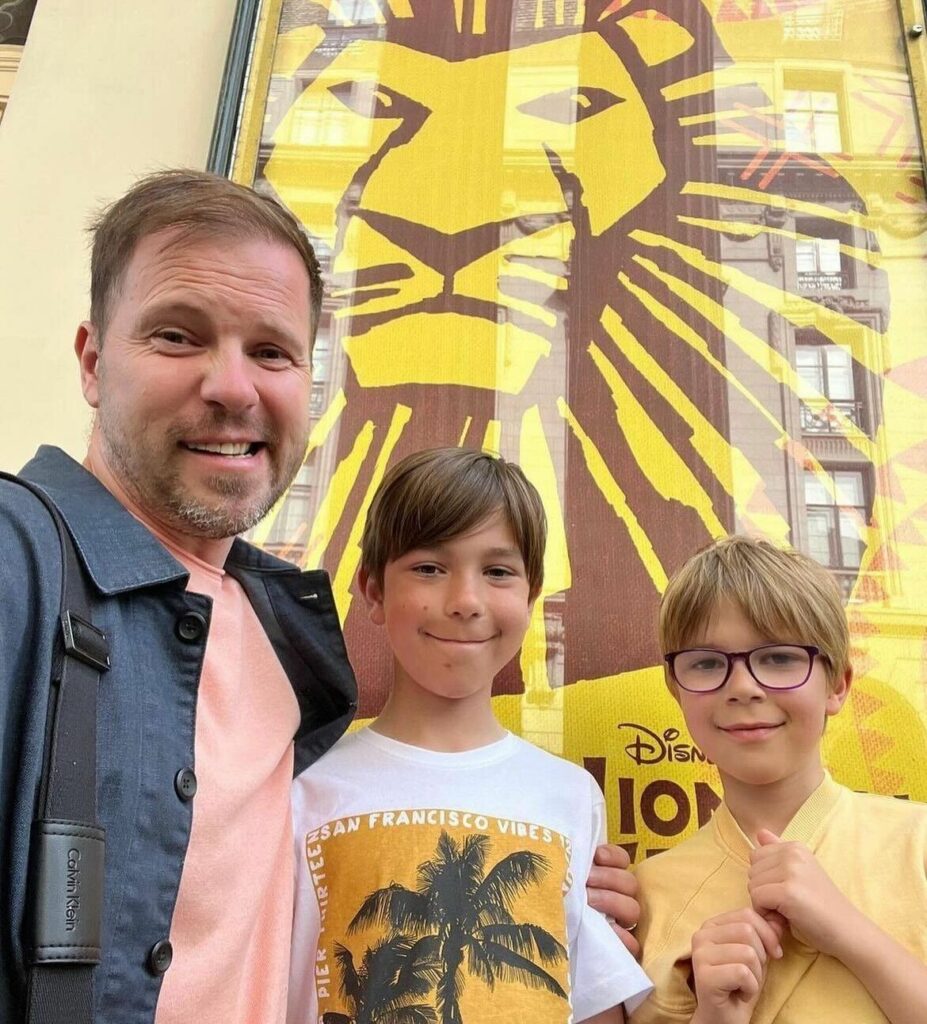
2. Entertainment In 2024: A Sea of Sameness
Let us first start with an irrefutable truth: TikTok’s encouragement of entertainment and culture has most certainly birthed a new wave of trailblazing brands and creators that are culture-defining. They have completely reimagined the way that you should show up in digital spaces. Those brands and creators “get it.” But for the rest of the chasing pack, rather than finding their own way of “getting it,” they simply copy, producing a wave of second hand sameness that has flattened their own distinctiveness and made everything about them largely unmemorable.

What am I referring to specifically? Open the app and see for yourself. Creators talk with a TikTok voice - a rising intonation that makes every sentence sound like a question. Trending audio is seen as the be all and end all, meaning only a handful of tracks are ever in wide circulation. The platform actively rewards users who post trend-centric content, meaning that to participate and win on the platform, it is widely accepted that you need to actively pursue sameness and respond to what is already happening. Where’s all of the individuality gone? It’s perhaps best summed up by this barb of a Tweet/X, posted last year by RGA: “there is one universal, legal dept approved, sanded-down style of humor that so many brands have latched on to. One voice applied to the same memes, using the same vocabulary. The Funny Brand Voice.”
3. A Symptom of the Problem: Life-Crafting
Not only is this lack of distinctiveness harming your brand, clearly, via the data shared before, it’s also turning off audiences from once-loved algorithms, and the knock-on effect of this is clear. In a pursuit to be more intentional, individualistic, and find meaningful ways of spending their time, TikTok users are documenting their newfound love for the concept of life-crafting. Life-crafting is an intentional mindset and practice, which people use to design their life in a way that aligns with their values, passions, and goals. It’s a direct response to life that is lived through an algorithm, by being more purposeful in your choices and actions, checking out of the digital dopamine dilemma, and exploring your individuality at a deeper level. Astrology and spirituality, neurodivergence, hedonism, heritage, mindful travel, or health and fitness: these crafts are discovered on social, and then taken off social to explore further and find deeper meaning.
Clearly, life-crafting is a symptom of the problem. And the problem is this: people want more than spoonful after spoonful of the same entertainment. The fact TikTok’s search functionality has grown in favourability shows that users are searching out for more meaning, as the algorithm itself is not able to satisfy their yearning for depth and difference. Nor does a platform’s engagement mechanics - like, comment, view, and share - provide anything more than the ability to tell the platform you want to see more of a specific style of content.
So, what’s the solution? For brands on social media, there is a need to push back against total trend-led conformity, by leaning into more distinctive ways of engaging with audiences. To be distinctive, brands need to tap into different ways of involving audiences in the entertainment and use more novel means. Distinctiveness is key: but how do you be distinctive, in platforms that encourage sameness?
4. Embrace Playfulness: Why Entertainment Is A Two-Way Street
What life-crafting tells us is that consumers want to be less passively consuming things that are served to them, and more actively involved in the things they are seeking out. This doesn’t mean brands should have less fun as a result: it’s more about recognising that entertainment is a two-way street. Audiences want to get involved in the entertainment as much as they want to consume it, and we only need to look at gaming, as the harbinger for the entertainment space, to see that this is true.
Gaming’s influence on entertainment is there for all to see. The biggest streaming titles are based on games, or eventually, become games. SVOD platforms are bringing gaming within their apps. Video games even generate more revenue than the music and movie industry combined. And video game success is due the fact it mandates you to enter the new world it creates, allowing you to lose yourself in the moment through the cognitive demands it sets. All of this leads to longer session lengths, whilst the sense of jeopardy in winning or losing leads to heightened levels of attention, emotion, novelty, and resultantly, favourability and memorability.
But this isn’t a call to arms for gaming. Rather, it’s a call to arms to embrace the essence of gaming, which is playfulness, and how brands can be playful in their marketing. By being more playful, brands can turn their approach to entertainment from a one-way broadcast into a two-way interaction. In being playful, brands deliver on their need to be entertaining, but do so by inviting users to go beyond, making the viewer a co-creator, a participant, or a challenger.
This can be done in a multitude of ways, and our Innovation team below will each point to a trend in how brands are being more playful with audiences, in order to break away from sameness and interact with audiences in a distinctive way.
5. Jonnie Owen on the Playfulness of Remix Culture: Is AI the new Brand ‘Plaything’?
It’s impossible to ignore the influence of remix culture when thinking of playfulness in the digital age. Especially as a musician! Before Web 2.0, content creation was a one-way street. The industry made the content, and the rest of us were passive consumers. But as soon as we were given the platform and the toolkit to create and share, we saw an explosion in remix culture, found in mash ups, memes, bootlegging, fancams, modding, 3D printing, and UGC. Fandoms expressed their brand love through their own creative interpretations of what the brands, artists, and IP holders meant to them. Fast forward to 2024, and you will see that most of the content we consume on social media has been remixed in some way or another.
It’s taken brands a long time to warm up to this change. There’s been a resistance, despite the fact that remix culture is where a lot of brand love exists. Brand managers are anxious about handing their IP over to the masses and encouraging playfulness. Recently however, we’ve been slowly edging towards remix culture as a macro-trend. Brand-to-brand collaborations have been heavily leveraged to drive cross-cultural appeal and brand ubiquity. Creators have also been made Product Developers or Creative Directors to reimagine who or what the brand is.
These are, of course, heavily controlled acts of playfulness, managed by the brand, which don’t endorse the audience to get involved. But the final barrier to fan co-creation has recently been overcome, thanks to Artificial Intelligence (AI). Brands have begun leveraging the capabilities of AI, bolstering fans with creative tools that allow them to foster a sense of ownership and freedom. They are able to portray a reflection of themselves intertwined with the brand identity. Most importantly, AI allows this to be done in a way that is brand safe (with the right controls).

For instance, Burger King’s 'Million Dollar Whopper' campaign invites customers to use their Generative AI toolkit to remix their famous Whopper and craft a new version of the burger in their own vision. Text prompts are used to assemble a burger with ingredients from the wildest corners of their imagination, with a shareable asset generated encouraging others to remix their own. As is par for the course with playful brand activity, there’s a ginormous prize: the winning entrant earns a ‘whopping’ $1m and will have their creation made available at select Burger King restaurants. Burger King's timeless 'Have it Your Way' mantra has been around since 1973. Now, with AI, the brand is bringing that ethos into 2024, offering a playful experience that resonates with contemporary consumers.
Similarly, Coca-Cola too have deployed AI for personalised consumer interactions, immersing them in a futuristic re-imagined world tailored to their preferences and surroundings. The Coca-Cola AI Lens allowed consumers to use the camera on a mobile device to take or upload a photo of your surroundings. Using AI technology, the Y3000 AI Lens will create a new image with a “futuristic” version of your location.

Staying with food, the Avocados From Mexico (AFM) company identified that an estimated 250 million pounds of avocados would be consumed during the Super Bowl LVIII. Leading with this great insight, AFM unveiled a multimodal AI tool called the GuacAImole, which uses image recognition, text, and image generation to create personalised guacamole recipes from the contents of your fridge, making avocados go further than just a dip, and helping the environmentally aware consumer tackle any potential wastage and upping their culinary skills.
We’ve seen so much brand advertising that harangues AI in creativity and its perceived absence of humanity. Ironically, we’re actually seeing that with co-creation and remix culture, AI allows the most important humans to the brand - the fans - to get involved more than ever before. There’s a lot of humanity in being playful.
6. Jordan Carroll on Active Social: Playfulness Means Getting On Your Feet
When we think of life-crafting, one craft I am seeing distinctive brands chase in a big way is Active Social. By Active Social, we mean social media activity that encourages active participation and physical proactivity. The call to action is exactly that - the content asks you to get you on your feet and move. It works for consumers because in health and fitness spaces, there’s a natural inclination to step out of algorithms and into the outer world to be productive and to support others. And it works for brands as they are able to build mental availability whilst consumers are going through meaningful change - whether mental or physical - and challenging themselves to be better, creating positive emotional associations with the brands.

For example, Chipotle partnered with Strava to create custom routes and challenge runners to complete segments that end at Chipotle restaurants. The individual that completed each segment the most in each city would receive free Chipotle for a year. The brand even collaborated with a Strava artist to produce their chilli logo as a route-map, imprinting the brand’s iconic image into the app for the most native of integrations. With Strava providing brands with the opportunity to engage audiences beyond likes, comments, views or shares, there’s a novelty and participation baked into interaction on Strava which makes it highly memorable.
On a similar plain, running brand Saucony discovered that the average person scrolls 78 miles per year - the length of three marathons - and turned this insight into a social challenge. They encouraged brand fans to stop doom-scrolling and take part in its “Marathumb Challenge”. Using screen time metrics to actively compare scrolling distance to stepping distance; if the participant moves farther than they scroll, they have the chance to redeem Saucony-branded merchandise. Using life-crafting messaging within the actual campaign is a surefire way to appeal to those consumers who are becoming apathetic to the endless stream of entertainment and wanting something more playful.
It’s not all about working up a sweat, either. Britvic launched The Robinsons Big Fruit Hunt, a geolocation-based digital treasure hunt powered by augmented reality, to encourage parents and their young children to go outside and find virtual fruit placed in parks and other public green spaces located near them. Collecting fruit leads to the chance to win prizes such as family activity packs and special activity days out.
Instead of treading the same trend-led path that other brands are, these three brands recognise that people want to feel, do, and see something different to break out of algorithmic mundanity. People want to get outside, touch grass and feel challenged, so why not create something native, distinctive, and genuinely engaging for when consumers are in this moment?
7. Robert Stevenson on Treasure Hunts: Don’t chase trash, chase treasure
Building on Jordan’s example with Britvic, one trend (but to be clear; distinct from the short-lived viral TikTok aesthetic type of trends) we’re seeing crop up again and again recently is treasure hunts! Whether digital, or out there in the physical world. Treasure hunts sound like a remnant of the past. Kids parties, perhaps how people had low-cost fun in the 70s and 80? However, they’re worth a closer look as a 2024 marketing strategy. There are several reasons that point to their return, but two specifically are worth mentioning.
Firstly, the tech. Augmented Reality has been around for years and Pokemon Go was an immensely popular IRL application that involved hunting down and collecting characters…. sounds a lot like a treasure hunt! Yet, we haven’t seen other versions of this that have lived outside of nerdy interest groups. We’ve also seen the rise of VR (Virtual Reality) and FOOH (Fake Out Of Home) too, which is another signal of the convergence of IRL and digital worlds. The technology is constantly improving, meaning users and brands are finding that the barrier to entry is much lower. Executions no longer have to involve building a custom game, or creating a bespoke microsite. Mixed reality can be achieved within social apps and Instagram is reportedly working on a Friends Map feature, similar to Snapchat, in which users can view friends' locations on a map and leave location-based notes for friends to pick up.
Secondly, gaming. Everyone knows gaming is a huge part of culture. And casual gaming is massively popular with people that don’t fit the stereotype. Many games, including those on Fortnite and Roblox, Minecraft, Animal Crossing and more, are centered around maps. Users explore islands, picking up items to build with, trade, and grow strong! In essence, the steps, objectives and the appeal with treasure hunts are the same. The mechanic is different, however, this presents an opportunity to tap into the same playful mindset but with different audiences away from traditional gaming environments.

Several brands have ventured into treasure hunt territory recently. Mondelez-owned Cadbury’s Worlwide Hide Easter Egg Hunt 2024 is being widely promoted across media, with OOH spots. Users can gift someone they know a virtual egg, by hiding it in a meaningful location on a digital map - leaving cryptic clues to lead them there. This taps into emotions, while bridging digital and IRL worlds. The easter egg hunt is free to use, requiring an email address, although Cadbury’s has also integrated buying an egg into a journey for those that want to.
Diageo rum brand Captain Morgan is maximising its partnership with the NFL through its season-long ‘Follow the Captain” activation. The campaign features music artists such as Action Bronson and Bebe Rexhe in social and TV spots. Fans are encouraged to pay extra attention to the brand’s advertisements across the season, as any one of them could contain a clue or hidden QR code. Prizes on offer include intimate performances from the featured artists and a trip to the Super Bowl.

In November, EE launched an immersive campaign that blurred the lines between the physical and digital realms, offering gamers a unique and playful experience. Across 13 real-world locations, players were challenged to discover physical game chests containing gear worth up to £1k. Simultaneously, Twitch streamers played the game, providing hints about chest locations and passwords to unlock them, and could win digital prize chests. Leeds city centre was then recreated digitally, with avatars navigating the city in-game, undertaking tasks like collecting coins and assembling a map, which were used to reveal the chest locations. The campaign included a hero video, shot in Leeds city centre, incorporating a cosplay flash-mob of Live Action Role Play characters (LARPs).
And, as part of its investment in niche fandoms (they recently hired Taylor Swift, Acid House, Crocs and Pokemon curators), the V&A Museum initiated a treasure hunt across the UK, to bring awareness to its collection of artefacts. The museum worked with creators to produce miniature objects that would be hidden around the country, and left clues for fandoms to find them, including on Twitch and across social media.
It doesn’t always have to be a large-scale activation. McDonald’s hid breakfast wraps in their social posts, encouraging followers to hunt them out and comment where they were in order to get their hands on free breakfast wraps via the app. A very simple execution, and a great way to capture more engaged time, which helps consolidate memory and brand recall (not that McDonald’s are short on that!).
Treasure hunts aren’t for every brand or every person, but, as exemplified by these brand activations, they will appeal to niche fandoms who are brand advocates, offering them something unique and exclusive that enables them to connect on a deeper level. This is particularly appealing if the prizes on offer are sought after (think exclusive event invites, products) or food - everybody wants free food. Ultimately, the advantage of treasure hunts is in the innate way they are optimised for attention. Users have to think, consider options, unpick clues, often discuss with other people in the community. All this occurs under the facilitation of and time spent with the brand. The brand story can be woven in to the clues, destinations, aesthetic of the content, meaning that brands are creating their own moments, while developing meaningful connections with their community over time.
8. Robert Stevenson on Quizzes: Barriers to Entry Are Positive!
Quizzes are another fun and playful way for brands to capture sustained attention from consumers. Alcohol brands such as Staropramen (Molson Coors) and Jameson’s Whiskey (Pernod Ricard) utilise website quizzes to guide their followers to become experts in their product, food pairings as well as, in the case of Staropramen, the city of Prague; the home of the brand.
Quizzes go beyond entertainment, offering a way for brands to reward brand fans while educating consumers on the periphery. They act as a barrier to entry to the inner circle. In many respects this is actually a positive thing, providing distinction and a way to reward the biggest fans who are willing to go the extra mile.
The most extreme example of this is the Chinese streaming site BiliBili. Sitting somewhere in the juncture between YouTube and Letterboxd, but for Anime, the site has a 2 hour long, 100 question exam (!) which anyone wishing to be part of the community must take in order to gain entry. According to the company’s Chairman and CEO Chen Rui, it might be the world’s most-taken test. Crucially, the retention rate once this obstacle has been passed is incredibly high while the vibe within the community is positive and safe.
Beavertown Brewery (Heineken) created a cipher, which had to be deciphered as part of its Halloween campaign which centered around UFO sightings. They worked with a ‘sand designer’ to place ‘crop circle’ on a Welsh beach, containing symbols and codes.
Less extreme, Mastercard’s current campaign “Pass to Priceless” merges the excitement of a quiz with the social buzz of interactive participation, with users taking part in engaging social challenges. The quiz takes place across the knock-out rounds of the Champions League, incentivising repeat visits to interact with the brand. With each correct answer and social interaction, players accumulate points and progress to the next round, enhancing their chances to secure tickets to the UEFA Champions League Final.
Giveaway culture has too often been utilised as a race to the bottom for mass engagement and followers, offering no barriers to entry to compete in the giveaway, which in turn attracts the wrong type of audiences to your brand. Barriers to entry in quizzes like the above are a positive thing, as it allows the brand to be playful and reward the customers who are true fans and want to interact with you in a deeper and more meaningful way. After all, would you rather have 10,000 participants who were there for free stuff and will never buy your product, or 1,000 participants who are willing to quiz themselves on how much they love your brand?
9. Conclusion
Platforms, brands and media have all contributed towards the creation of a one rule playbook - be entertaining - since the turn of COVID-19. And whilst what’s considered entertainment is completely subjective, the homogenisation of entertainment as a one-way broadcast and trend-participation has led to the sameness which is now causing a change in what consumers are seeking out. By solely participating in trends and attempting to make your brand a part of a moment that is not yours, you will struggle to let audiences know what you stand for. The playbook needs to be reimagined so that more brands can win.
In making your own moment, born from social, that encourages playfulness, you are able to break through the noise and communicate what your brand is about, without needing to connect it to a trend which is ultimately winning out in the messaging hierarchy. Trends and entertainment are not the be all and end all: there are different ways to play the game.



























































